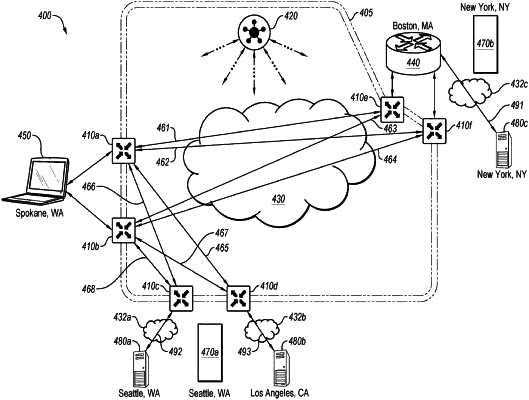| CPC H04L 45/308 (2013.01) [H04L 43/08 (2013.01); H04L 45/124 (2013.01); H04L 45/125 (2013.01); H04L 45/22 (2013.01); H04L 47/2433 (2013.01); H04L 61/4511 (2022.05); H04L 45/04 (2013.01); H04L 45/302 (2013.01); H04L 45/64 (2013.01)] | 17 Claims |

|
1. An edge network device comprising:
at least one processor; and
at least one memory, storing instructions which when executed by the at least one processor, causes the at least one processor to:
receive an identifier of an application within an internal network domain, wherein the identifier indicates that data of the application is to be routed along a default path until an alternative path is triggered;
determine a performance of routing the data of the application through the alternative path; and
dynamically reroute the data of the application through the alternative path based on triggering the alternative path, wherein the alternative path is triggered based on the performance of the alternative path exceeding a threshold increase over the default path, and wherein the dynamic reroute causes the at least one processor to:
receive a domain name service (DNS) query associated with the application;
in response to identifying a DNS response to the DNS query, identify an internet protocol (IP) address within a packet of a flow from the DNS response associated with the alternative path; and
store the IP address as a stored IP address associated with the alternative path;
compare the IP address with stored addresses associated with alternative paths including the stored IP address;
in response to a match between the IP address within the packet of the flow and the stored IP address, associate the flow with the application; and
route the packet along the alternative path.
|